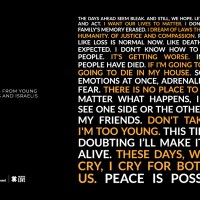If you’ve read about our peacebuilding work in Israel and Palestine or our emergency response to Afghanistan’s recent earthquakes, you might have wondered how we can facilitate cooperation across dividing lines to make people’s lives better. Part of the reason key stakeholders in conflict accept our invitation to collaborate is because they trust us. We earn that trust by being multi-partial.
What is Multi-partiality?
Similar to Preemptive Love’s stance of loving anyway, multi-partiality is a posture that advocates uncompromisingly for the dignity of all. Instead of viewing conflict as a binary clash with a definite right side and wrong side, multi-partiality acknowledges the complexity of conflict dynamics. It recognizes that every party in conflict has needs that matter. Multi-partiality is rooted in our organizational values of empathy and collaboration, which allows our diverse teams to work together despite our individual beliefs.
The Difference between Multi-partiality and Neutrality
Multi-partiality is not neutrality. Neutrality conveys detachment because neutral parties are not directly involved in a conflict. Our diverse teams come from the divided communities where we work. They understand firsthand a particular conflict’s dynamics because they live them.
The Benefits of a Multi-partial Posture
Being multi-partial enables us to engage with all sides in a conflict and invite all actors to participate in building peace. There’s a saying that encapsulates multi-partiality: “The people who need to build peace are the people who need to build peace,” meaning that conflicts are more justly resolved when the conflict transformation process is inclusive.
Being multi-partial in circumstances where there is stark polarization, high levels of physical violence, systematic discrimination or persecution, and human rights violations is exceptionally difficult and equally as necessary. Our multi-partial posture allows us to build trust with all the major actors in a conflict, frame issues in a way that unites people across dividing lines, access communities or sectors that may be off limits to others, and pursue long-term solutions to intractable conflicts.
Our multi-partiality stance puts people first by reaffirming our shared humanity. Won’t you join us in taking a stand for human dignity instead of taking a side? Building peace takes all of us, and the need for peace has never been so urgent.


